Compress Air --------------------- 2 (per cubic meter)
2 (per cubic meter)
Energy density storage drives the choices that can be made and
is essentially a tradeoff between stored power density and stored
energy density.
Power = energy x time of usage
so systems with large power densities but
small energy densities means that they discharge their power
relatively quickly. Systems with large stored energy densities
generally mean systems that discharge power at relatively slow rates.
Only gasoline and hydrogen have both high power and high energy storage
capacity.
The most widely known and used energy storage system is the chemical battery:

>


New class of Lithium-Sulfide
batteries looks very promising:
Figure of Merit:
A driving range of 300 miles requires about 400 KWH of storage
energy (e.g. 10 gallons of gas).
At energy density of 100 watt hrs per kg it would require 10 kg of
batteries to store 1 KHW of energy. Therefore it would take 4000
KG of batteries to stroe 400 KWH of energy.
4000 KG is more than the weight of the vehicle. This is the basic
problem with current battery technology and current vehicle design.
Now let's suppose one has a lightweight vehicle that could get 60 mpg
(like the Insight does).
At 60 mpg one would use about 5 gallons to go 300 miles and that's equivalent
to about 200 KWHs of storage.
With a battery material that could get 500 watt hours per kg, then you
would need a mere 400 kg to cover this range. Those technologies would
make pure electric vehicles feasible. We are not there yet (or even
close).
Who killed the electric vehicle  Poor energy density
storage of batteries!
Poor energy density
storage of batteries!
More on Batteries Good overview of
different types; advantages and dis-advantages and the like. Read this
resource in detail.
Types of Energy Storage Systems
Aquifer Thermal Energy Storage (ATES)

The next step beyond this is the borehole system where many holes
are drilled to tap warm groundwater. A working example is the
Univeristy of Ontario Institute of Technology
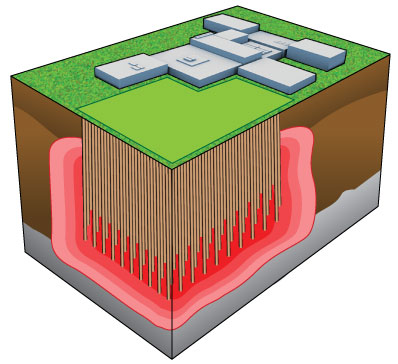
Similiarly, rooftop systems are easy to install tho there are load
bearing issues:

Pumped Hydroelectric Energy Storage:
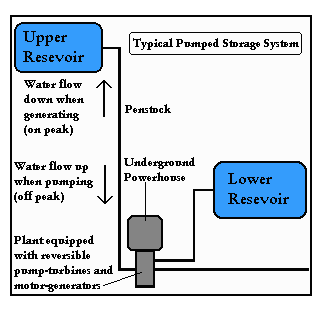
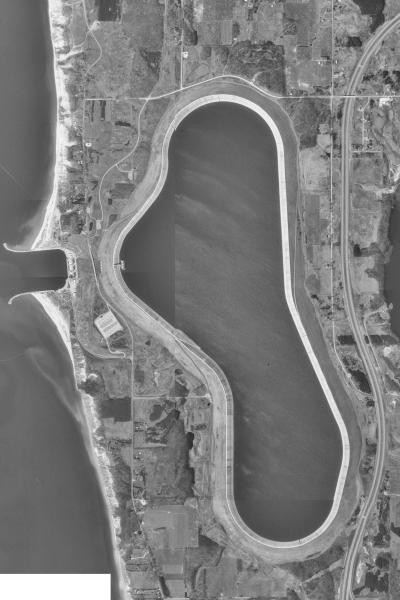 Simple in concept
Simple in concept  use excess energy to pump water uphill
use excess energy to pump water uphill
 pump from lower reservoir (natural or artifical) to upper
reservoir.
pump from lower reservoir (natural or artifical) to upper
reservoir.
Energy recovery depends on total volume of water and its height
above the turbine
- need at least 100-meters
 this is a stringent limit
on locations
this is a stringent limit
on locations
- artificial lower reserviors can made via excavation
 can achieve higher energy density due to large vertical distance
(up to 1000 feet!)
can achieve higher energy density due to large vertical distance
(up to 1000 feet!)
- facility does not impact free flowing stream
- sediment build-up at dam base is minimized
- Hydropower is 80% efficient (uphill or downhill). So to
pump uphill and the get energy downhill, efficiency is 0.8x0.8 =
64%
Cost Issues:
Suppose a company has a coal fired plant which operates at 36%
efficiency and uses excess power to pump water uphill. The overall
efficiency of recovering that to deliver to the consumer is
0.36 x 0.64 = 0.23 (23%)
- So stored energy is more expensive
 what's the incentive?
what's the incentive?
- Need to balance this cost against the costs of building a power
planet with capacity to meet some theoretical maximum demand but the
rest of the time doesn't operate at this level
Real Life Facility in Michigan
- Use Lake Michigan as Lower Reservoir
- Upper reservoir is 75 meters higher
- Peak capacity is 2000 MW (!)
- Stored energy is 15 million KWH`
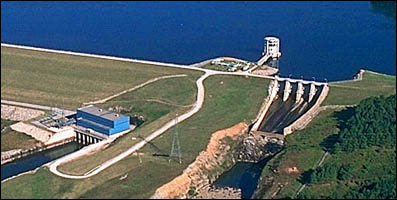
Of course, you can always just refill
the lake in times of low demand
China now has the largest facility in Asia:

Specifications:
- Two storage reservoirs, 1 km apart
- Elevation is 590m
- Storage volume is 8 million cubic meters. This equates to 4 GWHs (gigawatt hours)
- Reservoir drainage: Two 7 meter diameter pipe branches into 3 3.2-m
diameter pipes
- Each 3.2 m diameter pipe is connected to a 306 MW turbine.
- Total capcity is therefore 1.8 GW meaning the system can drain
for about 2.5 hours to get 4 GWHS.
- Total project cost estimated to be 1.1 billion dollars so that's
less than 1.1/1.8 dollars per watt (about 60 cents per watt).
Also the world's first seawater pumped storage facilty recently
came on line. Height is 600 m above sea level; total capacity is
600 MW.
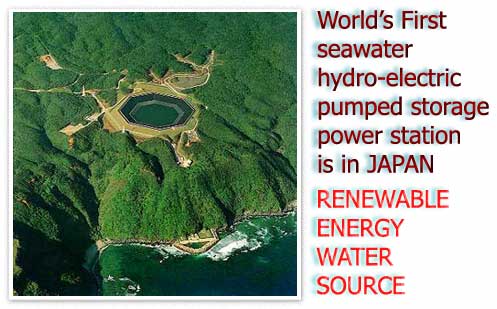
FLYWHEELS and ENERGY STORAGE

A flywheel, in essence is a mechanical battery - simply a mass rotating about an axis. Flywheels store energy mechanically in the form of kinetic
energy. They take an electrical input to accelerate the rotor up to speed by using the built-in motor, and return the electrical energy by using this
same motor as a generator.Flywheels are one of the most promising technologies for replacing conventional lead acid batteries as energy storage systems.
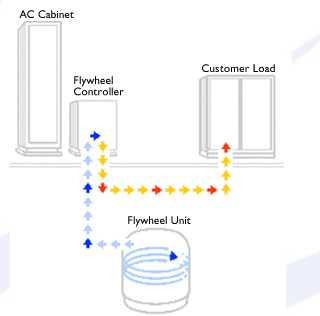
So, in other words. During times that your
generating more power than you need, you can spin the fly wheel up,
so to speak. When you need to recover that energy, you let the fly wheel
spin down.
Example of Flywheel/Piston arrangement:
Inertia of the Flywheel helps keep the system going.
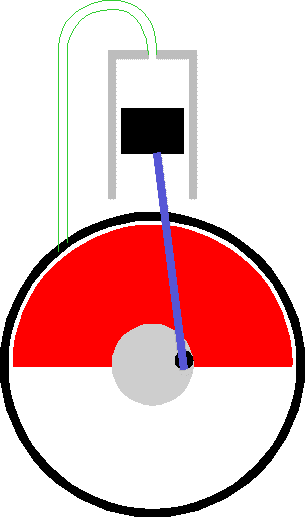
To optimize the energy-to-mass ratio the flywheel needs to spin at
the maximum possible speed. This is because kinetic energy
only increases linerarly with Mass but goes as the square of
the rotation speed.
Rapidly rotating objects are subject to centrifugal forces that can
rip them apart.
Thus, while dense material can store more energy it is also subject
to higher centrifugal force and thus fails at lower rotation speeds
than low density material.
Tensile Strength is More important than density of material.
Long rundown times are also required  frictionless bearings and
a vacuum to minimize air resistance can result in rundown times of
6 months
frictionless bearings and
a vacuum to minimize air resistance can result in rundown times of
6 months  steady supply of energy
steady supply of energy
Flywheels are about 80% efficient (like hydro)
Flywheels do take up much less land than pumped hydro systems
Fused Silica Flywheels are possible:
 High tensile strength material allows it
to be rotated very fast (100,000 rpm) without flying apart
High tensile strength material allows it
to be rotated very fast (100,000 rpm) without flying apart
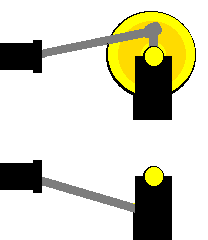
The model with the small yellow disc
tends to stop when the crank and
connecting rod are in a straight line
('dead' spots) - because sliding the
brass knob exerts no turning force on
the shaft.
In the model with the big yellow
flywheel, it is easy to keep the disc
turning, once it has started, due to the
effect of the flywheel.
The mass and the size of the big
flywheel helps resist the slowing down
of the model as it is turning.
Beacon Power - the Leader in Flywheel
Technology
Flow Batteries:

Excitement over flow batteries derives from their attributes, which combine aspects of conventional batteries and fuel cells. They are relatively
simple, efficient, scalable, durable, and can optimize either power or energy output, as desired. Flow batteries can respond in fractions of a second and can cycle rapidly and deeply at high or low power output with minimal battery degradation.
Flow batteries are scalable from a few watts and kilowatt-hours to tens or hundreds of megawatts and megawatt-hours.

The concept of using large flow batteries at Wind Farms, which you would
think would be a no-brainer, has finally started to catch on. Duh!
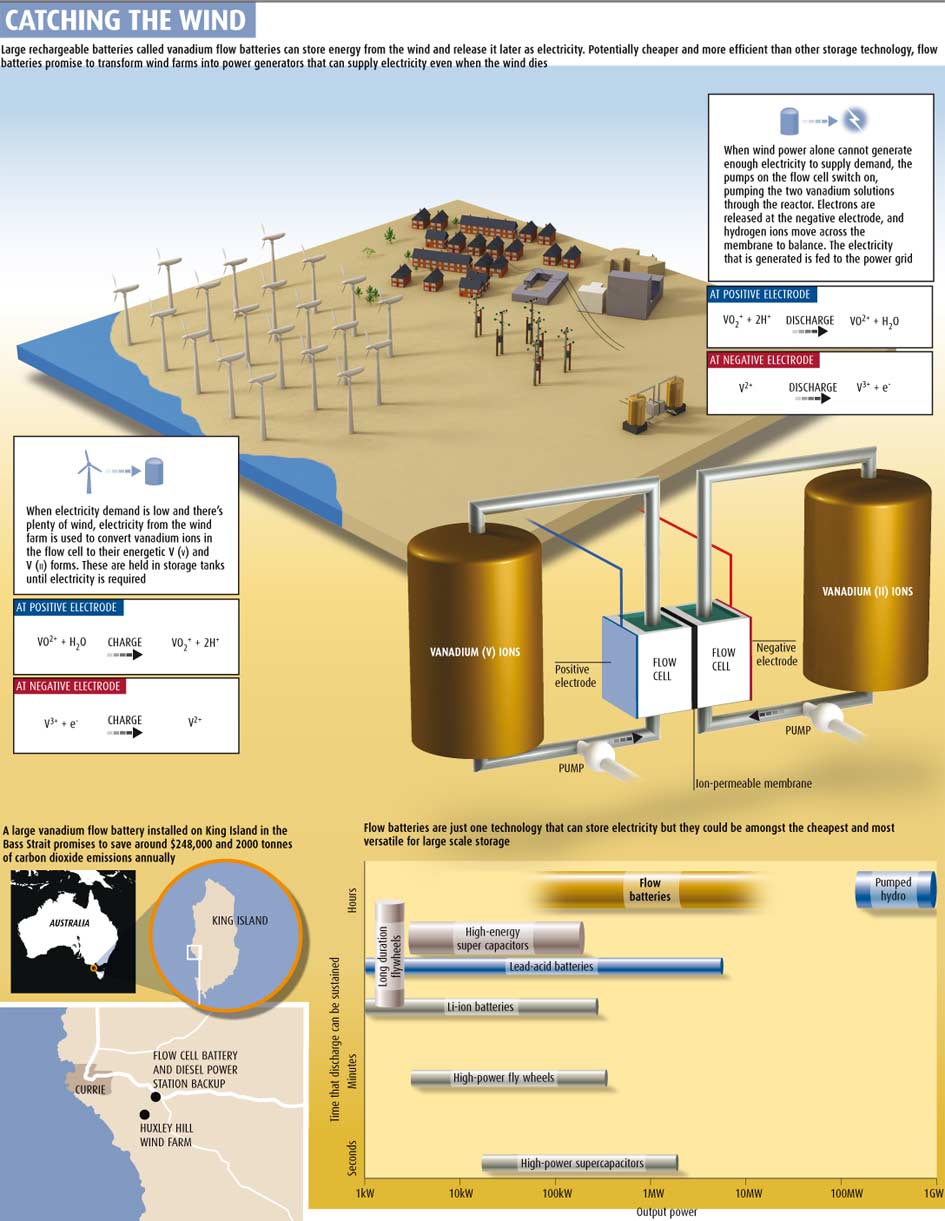
Compressed Air:
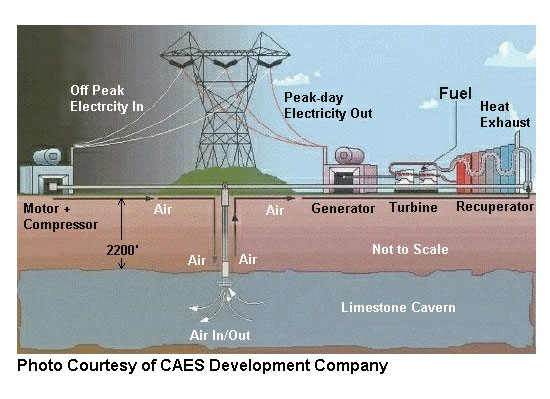
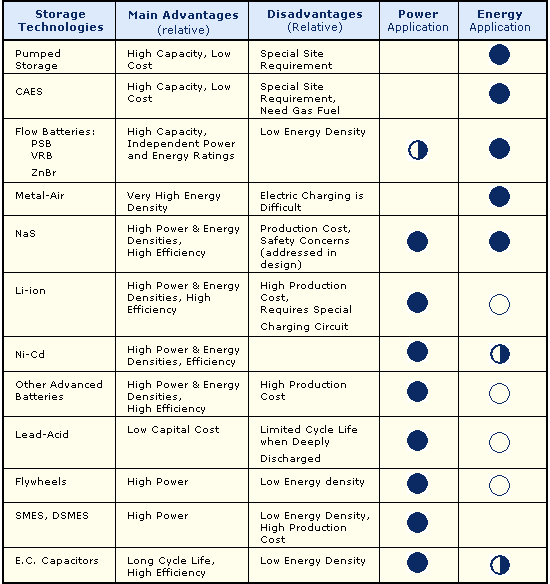
 Fossil Fuels
Fossil Fuels
 especially solar. Need to store the
excess energy when the collector system is being irradiated
especially solar. Need to store the
excess energy when the collector system is being irradiated
 Generating stations operate more efficiently
if they run at constant output level
Generating stations operate more efficiently
if they run at constant output level  want to shove unused
energy to a storage system and recover it later at times of peak
demand.
want to shove unused
energy to a storage system and recover it later at times of peak
demand.





















